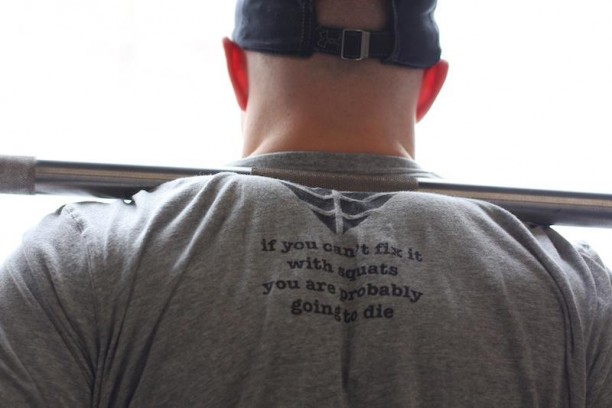
Yesterday I snuck in for my third workout at Sublime since construction started. I managed to squeeze in an olympic lifting session before it came time for the open house.
I heard one of the guys working on the bathroom crack a joke about getting a hernia if he attempted what I was doing. It got us into a bit of a fun conversation where we joked about old SNL skits and this milk commercial…
One of the significant benefits of resistance training is increased bone mineral density. You’ve probably read about it in a magazine recently. Unfortunately, it probably didn’t have the same shock effect as the milk commercial above!
At least once a week for the last several years I sit down for a few hours and do some research to improve myself as a coach. Recently I’ve been spending more of my time sifting through journal studies. Conveniently, my studies today brought me across some journal reviews dealing with bone mineral density.
I’ve never cared too much about “why” things work at a cellular level when I coach, and I especially don’t expect you to care about it. So I won’t bore you with some of the things I read today! But I have always cared about understanding what the key issues are and what to do about it.
How to optimize your results regarding bone mineral density improvements from exercise
1. Start young. Well, this piece of advice might be coming a bit late, but studies have shown that in both boys and girls, athletes who start high-impact exercise prior to puberty will have greater peak bone mineral density than if they start after puberty. The strongest response to loading occurs during growth.
2. Stay active. Athletes who did high intensity training at a young age, and stayed active even at a recreational level, seem to at least partly preserve the benefits of the high impact training into advanced age. Retired athletes have better bone density than those who were not as active.
3. Endurance activities don’t cut it. The benefits from running, cycling and swimming were not nearly as significant as higher impact options.
4. Be normal. Dieting, being very low in body mass, eating disorders, and highly strenuous training may prevent you from reaping the benefits of your training. Additionally, if you have menstrual or hormonal alterations, they may limit your results as well. So, it would be prudent to adopt healthy attitudes toward food and body image – something that a healthy training community can help you with.
5. Be male. Ok, I know there’s not much you can DO about that. It’s just that, unfortunately, females don’t get all the same benefits that males do from loading. HOWEVER, this just increases the importance for women to get started young with their training to improve their peak bone mineral density. See next point…
6. Be consistent. In a study analyzing the effects of weight training on bone density of pre-menopausal, post-menopausal and elderly women, it was found that consistency of training was an important factor in making changes to bone mineral density in the all too important cortical bone (which accounts for 80% of bone mass). It takes years to make changes. So you’ll need to show up at least twice per week and lift heavy things to reap the results you’re looking for.
7. Don’t give up. If you’re reading this now and you’re already in “advanced age”, studies do show that resistance training reduces age-related bone loss and, at best, provides some small improvements.
8. Supplement with Vitamin D. When Vitamin D serum levels are 115 nmol/L, there is a 50% reduced incidence of bone fracture than those with a baseline of 62 nmol/L. Get your blood tested for Vitamin D levels and then supplement your way up to at least that level. The Vitamin D Council suggests that for optimal health, vitamin D serum levels should be between 125 nmol/L and 200 nmol/L with most of the population falling between 32 and 100.
Training at Sublime for bone density improvements
So, as you can see from the research, if you haven’t done high resistance exercise recently (or ever), the time to get active about improving your bone density is now.
It’s important to understand that you will never be required to do higher impact exercises at Sublime than is appropriate for you. We gradually build up your intensity levels, exposing you to new skills and higher levels as it becomes appropriate to do so. Some call it “scaling”. We call it “individualizing”. Fitness is an individual-oriented pursuit that is a hell of a lot more fun in a community environment.
Furthermore, our training method is divided into four different “levels”. Everyone starts at level one and progresses from there allowing for a lifetime of progressing and reaching new levels and goals. Remember that it takes years of consistent training to make changes to bone density the older you are, so this approach to life-long “fitness enthusiasm” has been proven to work best in keeping you consistent.
Finally, if you have older teenagers that haven’t yet got involved in physical activity, consider bringing them down to try this out. The investment they make now in training will pay big dividends in their “advanced years”. As we’ve read, they have the most to gain from starting training now.
Come check out our free classes every Wednesday night at 7PM to see if training at Sublime is the right option for you. But you’ll need to contact us to reserve a spot.
References


2 Comments